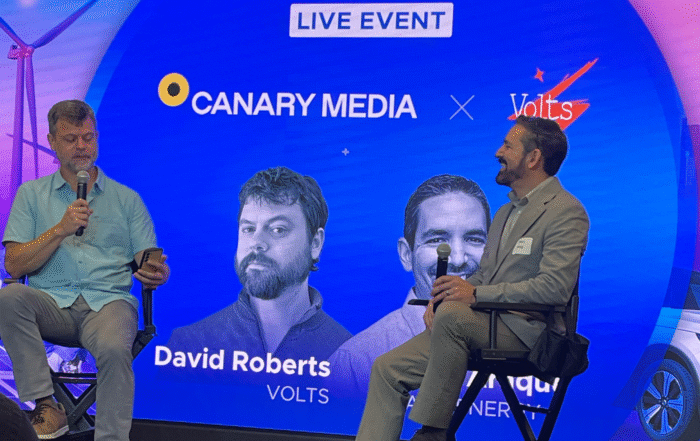Dan Crawford
Senior Vice President
By Chris Moyer and Dan Crawford
Anyone who serves as a spokesperson for their company or organization should heed the lessons from California gubernatorial candidate Katie Porter’s recent disastrous interview. At Echo Communications Advisors, we provide clients—including clean energy executives and climate and conservation leaders—with media training to prepare for interviews, panel discussions, and other appearances. And sometimes, a single interview provides a perfect lesson in what not to do. Unfortunately for her campaign, Porter gave us that moment.
When asked the simple question, “What do you say to the 40% of California voters, who you’ll need in order to win, who voted for Trump?” Porter immediately grows combative, and sets about litigating the specifics of the question rather than delivering her message to voters. It gets worse from there.
In a few short minutes, Porter violates nearly every basic principle we emphasize in our trainings. If we were coaching her, here are some of the points we would emphasize.
Remember Who Your Audience Is
Before every interview, ask yourself—who are you trying to reach? Spoiler alert: it’s not the person asking the questions. Your audience is the people who will watch the interview or read the story at home, or maybe even people who learn about it from social media clips and secondhand reporting. Porter forgets this key tenet and starts arguing with the reporter about the question, trying to win over the reporter instead of her key audience.
Every interview is an opportunity to make news that helps you achieve your goal—in this case with Porter, to make a good impression with California voters. She’s getting plenty of attention for this interview, but not for the reasons she wanted.
Have a Strong Core Message
Interviews are an opportunity to build a relationship with reporters, to shape a narrative, and most importantly, to say something to your audience.
Whether she forgot her core message or didn’t have one, Porter missed an opportunity to use a difficult question to speak directly to California voters.
Core messages should be clear, concise, and easily digestible. Find something memorable, that can be easily repeated and deployed in a variety of contexts. And most importantly, make sure your message is grounded in a shared value—something that everyone agrees on.
Know How to Pivot
When faced with a tough question, it’s as simple as ABC: Acknowledge, Bridge, and return to your Core Message.
Having a handful of bridging phrases like “What I’m here to talk about today is…” or “What I will tell you is…” at the ready makes it easier to pivot away from a tough question on the fly.
In Porter’s case, the pivot is easy. “I’m going to be a governor of all of California. That means fighting for every single vote, regardless of who they voted for in the last election. I’m running on a platform of…”
Don’t Tell Reporters How to Do Their Job
Any serious reporter bristles at the notion of their interview subject telling them how to conduct an interview. A visibly annoyed Porter does just that. “Ask the question as you have it written and I’ll answer it.”
Then, she looks at her staffer and says, “I don’t want to keep doing this,” and begins to take her mic off and get up before saying she won’t do an interview “with seven follow-ups to every question.”
That’s not how interviews work—and Porter’s been a public official long enough to know better.
Always Have a Game Plan
Politics is, at the end of the day, a popularity contest—and here, Porter comes across as defensive and unlikeable, undermining her own message.
With the right media training and a little practice, Porter could have easily used that question as an opportunity to lay out her agenda and make her case to voters. Instead, she’s the butt of jokes.
In today’s media landscape, a single moment can define your narrative. Whether you are a candidate, an executive, or a startup founder, you cannot afford to waste your platform. Don’t wait for your own viral misstep. If you or your organization could benefit from media training, we’re here to help. Reach out here.
Check out our recent insights and conversations:
Sign up for our newsletter
Receive updates on our work, industry news, and more.





